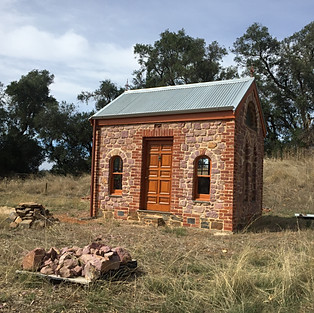top of page
Living Sculpture
From the turn of the 21st century, Hjorth’s work took on a more majestic dimension in terms of scale. Having spent much of the 1990s sculpting with recycled and obsolescent materials like foundry moulds for sand casting, Hjorth brought her passions — art, anthropology (material cultures) and architecture — together by building houses she called "living sculptures". Deploying entirely recycled materials, these living sculptures were often mistaken by experts as heritage.
Her Semaphore living sculpture, completed in 2011, was dedicated to the living memory of her son, chess champion and mathematician, the late Professor Greg Hjorth. The house won a South Australian Heritage award in 2011.
bottom of page


